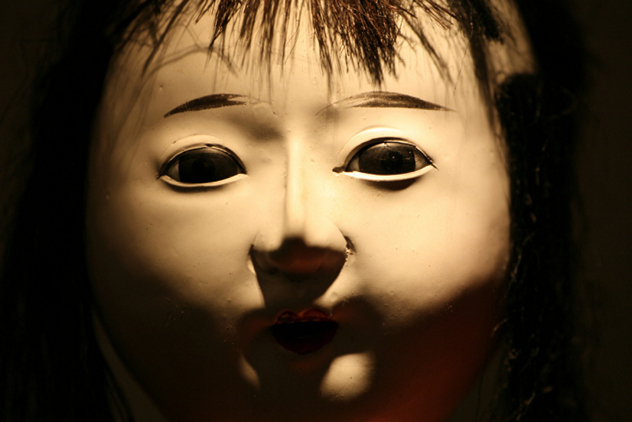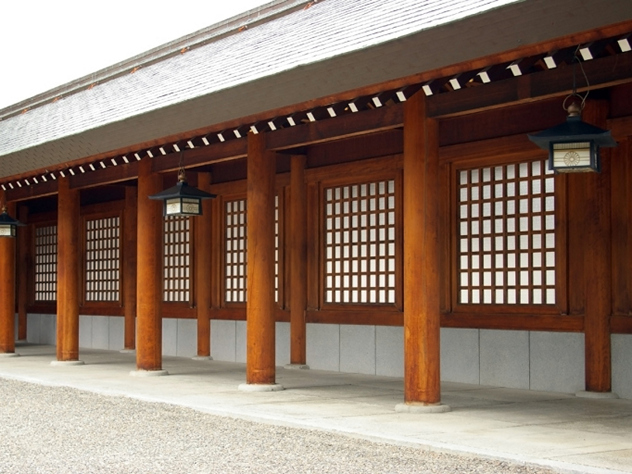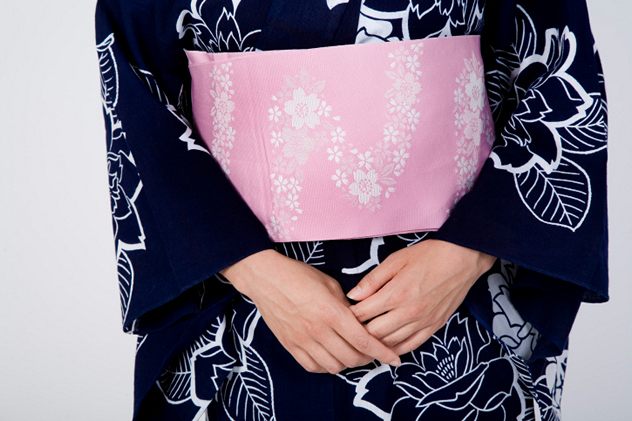 Weird Stuff
Weird Stuff  Weird Stuff
Weird Stuff  Animals
Animals 10 Inspiring Tales of Horses Being Human
 Mysteries
Mysteries Top 10 Haunting Facts About the Ghost Ship MV Alta
 History
History 10 Surprising Stories About the Texas Rangers
 Humans
Humans 10 Philosophers Who Were Driven Mad by Their Own Theories
 Miscellaneous
Miscellaneous 10 Video-Game-Worthy Weapons and Armors from History
 Weird Stuff
Weird Stuff 10 Psychics Who Accurately Predicted Wartime Events
 The Arts
The Arts 10 Pieces of Art Inspired by a Broken Heart
 Health
Health 10 Science Fiction-Sounding New Medical Treatments
 History
History 10 Surprising Facts About the Father of Submarine Warfare
 Weird Stuff
Weird Stuff 10 Times Real Laws Were Based on Bizarre Hypotheticals
 Animals
Animals 10 Inspiring Tales of Horses Being Human
 Mysteries
Mysteries Top 10 Haunting Facts About the Ghost Ship MV Alta
Who's Behind Listverse?

Jamie Frater
Head Editor
Jamie founded Listverse due to an insatiable desire to share fascinating, obscure, and bizarre facts. He has been a guest speaker on numerous national radio and television stations and is a five time published author.
More About Us History
History 10 Surprising Stories About the Texas Rangers
 Humans
Humans 10 Philosophers Who Were Driven Mad by Their Own Theories
 Miscellaneous
Miscellaneous 10 Video-Game-Worthy Weapons and Armors from History
 Weird Stuff
Weird Stuff 10 Psychics Who Accurately Predicted Wartime Events
 The Arts
The Arts 10 Pieces of Art Inspired by a Broken Heart
 Health
Health 10 Science Fiction-Sounding New Medical Treatments
 History
History 10 Surprising Facts About the Father of Submarine Warfare
10 Creepy Japanese Urban Legends
Japan. Home of Nintendo, sushi, and a festival celebrating the penis. It certainly is a country near the top of everyone’s must-visit list, and rightfully so. Japan is a country with an absorbing past and a fascinating future.
It’s also a country with more scary stories and fabulous tales than you can shake a stick at: J-Horror, manga, monster movies—the list is endless. Yet Japan’s real freak factor lies in its urban legends. Here are some of the best.
10Okiku Doll

There is no doubting that dolls are creepy. Those big bug-like eyes are enough to turn the stomach. But what about a doll possessed by a girl’s ghost? Introducing the Okiku doll, named after the doll’s first owner. The doll is quite big—40 centimeters (1’3″) in height—wears a kimono, and has hair that grows. Yes. Hair that grows.
The Okiku doll can be found at the Mannenji temple in Iwamizawa, in Hokkaido prefecture. When the doll first appeared in the temple it had cropped hair, but over the years the hair has grown like a hippie’s—to a whopping 25 centimeters (10 in). According to some, the hair is annually trimmed.
The legend goes that a teenage boy bought the doll for his two-year-old sister, Okiku. Okiku loved the doll; she played with it every day, dressed it up, spoke to it. Tragically, their friendship was short-lived: The girl died. Her family refused to get rid of the doll. After some time, they noticed its hair was growing, so they concluded that the spirit of their daughter resided within the doll. In 1938, they made the executive decision to hand the doll over to the temple, where it remains to this very day.
9The Red Room Curse

Pop-ups are annoying at the best of times. Well, how about ones that threaten you with imminent death? We are talking Japanese urban legends, so if the gaming glove fits . . .
The “Red Room Curse” is simple. A pop-up appears on your computer with a red door and the question “Do you like the red room?” in Japanese script. Once you click through a series of questions in the rudimentary Flash design, your name appears at the bottom of a list of other names. You may even recognize some of them as your friends. This will be the last thing you do. The next day you’ll be found dead in your room; you’ve committed suicide and your walls are painted with your own blood. As internet memes go, it’s safe to say that Grumpy Cat is a lot more fun.
As with so many urban legends, there’s an element of truth to the tale. In 2004, a 14-year-old student known as “Girl A” killed her best friend in a infamous crime called the “Sasebo slashing.” When police investigated her computer, they checked its browser history. The number one bookmark? The “Red Room” video.
8The Curse Of The Kleenex Commercial
“Pass me a tissue. Thanks. Hang on—it’s not a Kleenex, is it?” This is the sort of chat you might have heard around Japan in the 1980s. During that decade, Kleenex launched an impressive ad campaign. The main characters in the ad were a woman in white and a young boy, dressed up as a tiny ogre. The music for the ad was “It’s a Fine Day” by Jane and Barton.
All was not fine, however. Perhaps because the song was in a foreign tongue, rumors stared circulating that the tune was a German folk song with the lyrics “Die, die, everyone is cursed and will be killed.” Probably not quite what Kleenex were going for.
As a result, many viewers found the advert disturbing and several complaints were made. The ad was eventually pulled, but as soon as it was, the legends came thick and fast. The actress in the ad—Keiko Matsuzaka—was allegedly driven mad, or had become pregnant with the devil’s child, depending on who you listened to. The young child playing the ogre-slash-pumpkin-human hybrid died mysteriously. Every member of the crew that worked on the ad died as well.
With all that death and destruction, you’d definitely need a tissue or two to keep the tears at bay.
7Jinmenken
(Human-Faced Dogs)

Have you ever wished your dog could talk to you? Well, why don’t you go and get yourself a Jinmenken? They are dogs with the face of a human. They’ve been reported in Japanese cities, or running alongside highways at supersonic speeds.
Unlike other creepy Japanese creatures, the Jinmenken are harmless enough. If you leave them alone, they’ll likely ignore you. If they do speak to you, it will generally be to insult you. But what are they? Scientific experiments gone wrong and escaped from a secret underground lab? Trapped souls of car crash victims?
The least freaky theory is probably the best. According to this theory, Jinmenken are actually Japanese macaques, who have dog-like fur and human-like faces. It isn’t hard to imagine that, should someone see a macaque after a heavy night out on the town, they could confuse it with a human-faced dog. (“Pour me another sake, bartender. I’m seeing dogs with human faces!”)
6Fan Death

Although fan death is most commonly associated with South Korea, it is also a Japanese urban legend—and one that spreads across Asia as a whole. The premise is simple: If you leave an electric fan running over night in the room where you’re sleeping, you will die.
The idea of killer fans can be traced back to the 1920s, when people were warned of fans causing nausea, hypothermia, breathing problems, and even facial paralysis. Thank God for air-conditioning.
Others suggest that the South Korean government introduced the legend in the 1970s to cut the country’s energy consumption, but that does seem extremely far-fetched. Although, perhaps not as far-fetched as a killer fan draining you of life. There’s even a website dedicated to fan death, for those who are fans of such things.
5The Inokashira Park Curse

Boat rides are pretty romantic. All that serenity and calm air. The sound of birds landing on the water. Wind rushing through your hair. The curse that will cause the end of your relationship. Say what?
At the famous Inokashira Park in Tokyo, beware all those lovers who take a rowboat out on the lake. The urban legend goes that any couple that takes a ride on the water will soon fall out of love, their relationship broken forever.
The legend’s mystery can be found at the edge of the lake. Here, a shrine to Benzaiten—goddess of water, beauty, and words—overlooks the romantic setting. Being a jealous goddess, she curses all couples that dare show their love for one another on her lake. Should you ever visit Japan on your honeymoon, maybe give Inokashira a wide berth.
4The Sony Timer

Let’s be honest: Japan rules the roost when it comes to electronics firms. If you want a great, high-spec gadget—get it from the Orient. Sony has to be one of the biggest names on the shelf. However, rumors abound that Sony is not as clean-cut as it may seem. In the 1980s, people started to complain that their Sony devices would shut down mere months after their warranty expired.
Eventually, suspicion fell on Sony. Word spread that the company installed a timer into their electronic products, causing them to break down after a certain amount of time. This left customers no other choice but to buy replacement parts, pay for repairs, or buy the latest Sony model instead.
The rumor recently emerged once again. In 2006, a series of laptops were recalled after their lithium-ion batteries, manufactured by Sony, packed up. Online forums were alive with comments about “Sony timers.” Sony refute the claim, although in June 2007, vice-chairman Ryoji Chubachi admitted to knowing the phrase.
The biggest argument against the existence of the “Sony timer” is the fact that, in over 30 years, no one has ever found one. That includes brand rivals and computer whizzes. And so the “Sony timer” retains its urban legend status.
3The Lost Ark
 Indiana Jones is responsible for educating an entire generation on the mysterious lost Ark of the Covenant. The Ark, according to the Bible, was the ancient receptacle of the Ten Commandments. There are many rumors as to the whereabouts of the Ark. One of the most surprising places has to be on top of Mount Tsurugi, on the island of Shikoku.
Indiana Jones is responsible for educating an entire generation on the mysterious lost Ark of the Covenant. The Ark, according to the Bible, was the ancient receptacle of the Ten Commandments. There are many rumors as to the whereabouts of the Ark. One of the most surprising places has to be on top of Mount Tsurugi, on the island of Shikoku.
The Ark, as built by Moses, apparently holds superpowers, hence it is a much coveted item. The Ark was originally housed in a temple built by King Solomon, until roughly 1,000 B.C., when the Babylonians smashed the temple up. After this, the Ark’s whereabouts are vague. Over the years, the Ark has been rumored to be in Jordan, Egypt, Ethiopia, Southern Africa, France, UK, and Ireland.
However, Japan is certainly the oddest country on that list, due to its lack of a strong history of Christianity or Judaism. In fact, Mount Tsurugi is a landmark associated with Shintoism and Buddhism. So why there? This suggestion was made by a 1930s scholar, Masanori Takane. After years of studying the Ark’s whereabouts, he concluded that it was to be found atop Mount Tsurugi.
In 1964, when the Japanese government established the Tsurugi-san Quasi-National Park, all further excavation was banned for environmental reasons and the mystery of the ark in Japan was buried forever.
2Human Pillars

The concept of the human pillar is pretty weird. Imagine, if you will, a building you love. Maybe your childhood home? The bar where you had your first kiss? Maybe the apartment where you’re reading this list? Now imagine your body encased in the walls surrounding you. That’s what a human pillar is.
This rather odd form of “sacrifice” can be traced back to feudal Japan, when samurai or other important people would elect themselves to become hitobashira. This meant committing suicide and having their bodies encased within a building, or placed in the foundation. It was believed that the spirits of the hitobashira became guardians of the building, fending off any evil spirits.
The most famous case of hitobashira relates to the Matsue Castle in Shimane prefecture. The castle was built in the 17th century, but its construction proved tricky, with several walls falling down. As a result, a human sacrifice was sought, to steady the structure.
At the time, a local festival—called the Bon Festival—was taking place. The castle’s guards descended into the town, captured the prettiest dancer, and returned to the castle. Here, they killed their captive and embedded her corpse in the walls. The building work continued without a hitch.
But, of course, there’s more. Once the castle was built, whenever a young girl would dance in the streets of Matsue, the entire castle would shake. As a result, dancing was banned outright in the streets of Matsue. The next time a DIY project isn’t going your way, consider finding a dancer to sacrifice.
1Shirokiya Department Store Deaths

In December 1932, the Shirokiya Department Store in Tokyo went up in flames. The fire tragically claimed the lives of 14 people. But the blaze is best remembered for the bizarre urban legend that surrounds the tragedy.
In the smoke and confusion, several female shop assistants had found their way to the roof of the building—eight floors up. Firefighters called for them to climb down the safety ropes. The women started their descent to safety, but, at the halfway point, a strong gust of wind disturbed them. All of the women were wearing kimonos and—as is tradition when wearing a kimono—no underwear. The women, fearing that the wind would expose and shame them in front of the growing audience below, let go of the rope to cover themselves. In doing so they plunged to their deaths.
Curiously, in the ensuing days, the board at the Shirokiya Department Store ordered all its female employees to wear underwear. The sales of Western-style panties soared.
No one disputes that the fire was real. But are the deaths an urban legend or a true tragedy?
Let’s have a look at a couple of facts. Kimonos are tightly bound, which makes the viewing of particular parts of the female anatomy almost impossible from below. Also, mixed-gender onsen—hot springs where men and women would sit together naked—were all the rage in Japan for years before the tragedy. That suggest that the idea of women feeling such shame was quite unlikely.
Bizarrely, however, the Japanese firefighting manuals and textbooks document the deaths. What are we to learn from this? The next time you’re caught in a fire, make sure you’re wearing your undies.








